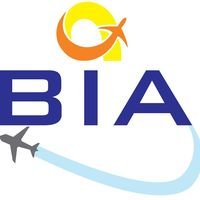Day 01 Arrive Phuntsholing.
After arriving you will be welcomed by our tour representative in Phuntsholing who will be your tour guide during your entire trip in Bhutan. Arrival in Phuntsholing Bhutan should be before 2pm for Permit formalities. And drive to Thimphu(Capital of Bhutan)(2500m 150 kms 05 hours)
Over Night in Thimphu Hotel.
Day 02: Thimphu
After breakfast we will visit the following places:
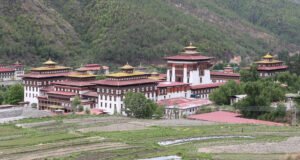
Tashichho Dzong
Tashichho Dzong, a Buddhist monastery cum fortress at the northern edge of Thimpu the capital city of Bhutan. The original Thimphu Dzong (the Dho-Ngyen Dzong) is said to have been constructed in 1216 by Lama Gyalwa Lhanangpa.
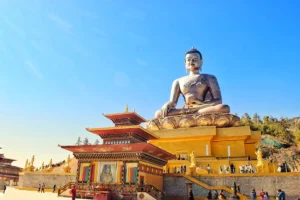
Kuensel Phodrang
The Kuensel Phodrang or the Buddha point is the world’s largest sitting Buddha statue, the statue is 167 feet high.
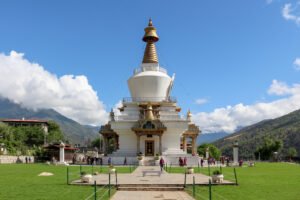
The National Memorial
The National Memorial was built by Bhutan’s third king, H.M. Jigme Dorji Wangchuck who is also known as the “father of modern Bhutan.”
The national Memorial Chorten is located in the center of the capital city, Thimphu and is designed like a Tibetan style Chorten.
In the morning after early breakfast we will visit Takin Preserve and head toward Paro.
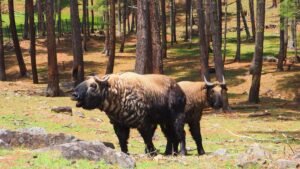
Motithang Takin Preserve
The Motithang Takin Preserve also known as the Thimphu Zoo by many is a small natural preserve for the Takin Bhutan’s national animal.
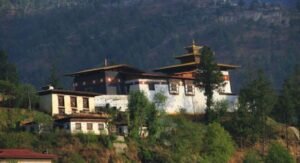
Changangkha lhakhang.
The Chagangkha Lhakahng temple is a early medieval Buddhist temple in the capital city Thimphu. The temple is situated on a ridge overlooking the city, near Mohitang on the outskirts of Thimphu. The temple is the oldest temple in Thimphu and was constructed by Lama Phajo Drukgom Zhigpo in the 12 century AD. Lama Phajo Drukgom Zhigpo is also the founder of the Drukpa Kaygo School of Buddhism. The Lhakhang’s central deity is Chenirizig. There is a large statue of Chenrizig, the 11 headed, thousand arm manifestation of Avolokiteshwara. The prayer books in the temple are larger in size compared to the usual Buddhist texts. There are also large prayer wheels and paintings in the walls of the temple.
The temple offers an excellent view of the city of Thimphu from its courtyard.
Over Night in Thimphu Hotel.
Day 03: Thimphu – Punakha.
Post early breakfast, you will drive towards Punakha via Dochula Pass. We will stop over for tea at Dochula (3,100 m), you can get stunning
views of the Himalayan ranges.
Post early breakfast, you will drive towards Punakha via Dochula Pass. We will stop over for tea at Dochula (3,100 m), where on a sunny day,
you can get stunning views of the Himalayan ranges.
NOTE: Lam peri National Park.
You can visit the following places in Punakha.

Punakha Dzong.
The Punakha Dzong or the Pungtang Dechen Phortang Dzong is located at the confluence of the Mo Chhu and the Po Chhu River, combine to form the Puna Tsang Chu which in turn is a tributary of the mighty Brahmaputra River. The Dzhong was constructed by Zhabdrung
Ngawang Namgyal Wangchuck in 1638.
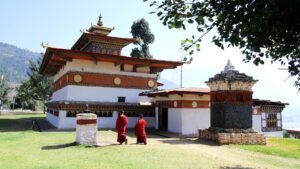
Chimmi Lhakhang
After early morning breakfast, you will drive to Paro and on the way, Admire the view en route the valley of Wangdiphodrang. We will drive to Chimmi Lhakhang to start with. The monastery stands on a small hill close to the village of Lobesa and was constructed in 1499 by Ngawang Choegyel, the 14th Drukpa heirarch.
Over Night in Punakha Hotel.
Day 04: Punakha – Paro.
After early morning breakfast, you will drive to Paro and on the way, we will visit :-
Simtokha Dzong
Ta Dzong (National Museum of Bhutan)
Rimpung Dzong.
Ta Dzong (National Museum of Bhutan)
The National Museum of Bhutan is housed inside the six storied circular Ta Dzong. The Ta Dzong is a medieval watch tower situated above the Rimpung Dzong. The Ta Dzong was constructed in 1656.
Rimpung Dzong
The Paro Dzong is probably Bhutan’s best known and most iconic Dzong. This is probably the first building you will notice when you land
at Paro International Airport and will probably be your first memory of Bhutan.
Kyichu Lhakhang
The Jowo Temple of Kyichu is one of the oldest temples in Bhutan. The temple was built by the Tibetan King Songtsen Gampo in the 7th Century AD. The Kyichu Lhakhang was one of the 108 temples constructed by him to subdue a demon that was terrorizing the people ofthe Himalayas. The temple is believed to have been visited by the Guru Rinpoche in the 8th Century during his visit to the Paro Valley.
Other important personalities to have visited the temple in antiquity include Lam Kha Nga and the Phajo Dugom Zhigpo. The Lhakahng underwent many extensions during the ages with the last one being carried out in 1965 by the Queen Mother Ashi Kezang Choden Wangchuck. She added another new structure to the temple called the Guru Lhakahng. As one of the oldest Lhakhangs, it houses many important relics. One of the most important relics of the temple is a 7th century statue of Jowo Sakyamuni which is believed to have casted at the same time as it famous counterpart in Lhasa Tibet.
Over Night in Paro Hotel.
Day 05: Paro.
After early morning breakfast, we will take you for a morning hike up to Taktsang Monastery, also known as ‘Tiger’s Nest’. Hanging precariously and magically from a rather steep cliff, the Taktshang monastery is a monument of genuine pride for the Bhutanese nation. It defies architectural principles to the core and amazes tourists from around the world. It is a sight to behold.

Kyichu Lhakhang
The Jowo Temple of Kyichu is one of the oldest temples in Bhutan. The temple was built by the Tibetan King Songsten Gampo in the 7th Century AD.
Overnight in Paro Hotel.
Day 06: Paro to Phuntsholing toward your destination.
In the morning after early breakfast we will head toward Phuntsholing for your onward destinations.
